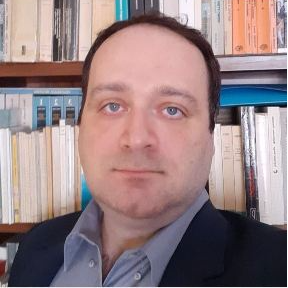Optical Spectroscopy of Low-Dimensional Quantum Materials
A special issue of Materials (ISSN 1996-1944). This special issue belongs to the section "Optical and Photonic Materials".
Deadline for manuscript submissions: closed (20 March 2022) | Viewed by 573
Special Issue Editor
Interests: Raman spectroscopy; photoluminescence spectroscopy; ultrafast spectroscopy; 2D materials; confocal microscopy; near-field optical microscopy; ultrafast electron and phonon dynamics; excitons; polaritons
Special Issues, Collections and Topics in MDPI journals
Special Issue Information
Dear Colleagues,
Low-dimensional materials show electronic wavefunction confined in one or more of their three dimensions. These spatial constraints lead to quantum size effects which strongly modify their electronic and optical properties with respect to their bulk counterpart. In the past few decades, zero-dimensional (0D) quantum dots and (1D) one-dimensional carbon nanotubes have shown superior optical properties, and intensive research has been done to exploit them in electronics, photonics, and sensing.
Relevant examples of low-dimensional systems are two-dimensional (2D) materials, such as graphene, transition metal dichalcogenides, and hexagonal boron nitride. These systems offer very strong light/matter interactions, many-body effects, tunable band gaps, and novel excitonic effects at room temperature. They represent the building blocks from which to form tailored van der Waals heterostructures, with control at the monolayer level, thus offering unprecedented opportunities for fundamental science and energy applications.
In recent years, since quantum emitters were found in various 2D materials, there has been an increasing interest in their quantum optical properties, and 2D materials have become a key platform for applications in photonic quantum technologies.
Optical spectroscopies such as Raman, absorbance, and photoluminescence represent a powerful tool to investigate the structure, the electronic, and the optical properties of low-dimensional materials and their heterostructures. Time-resolved spectroscopy allows researchers to investigate fundamental issues defining the electronic states’ dynamics, such as radiative and nonradiative decay channels. The coupling of optical spectroscopy to high-resolution microscopy offers unprecedented opportunities to resolve spatial inhomogeneities and new nanoscale phenomena, such as polariton propagation.
This Special Issue in envisioned as a forum for the discussion of the latest findings in the optical characterization of low-dimensional materials and of their future applications in optoelectronics and photonic quantum technologies.
Full research papers, short communications, and reviews are welcomed (but not limited) to the following topics:
Materials:
- 0D materials: quantum dots;
- 1D materials: Carbon nanotubes, nanorods, nanowire;
- 2D materials: graphene, transition metal dichalcogenides, h-BN, etc.;
- Van der Waals heterostructures;
- 2D electron gas systems: LAO/STO interfaces, etc.
Optical spectroscopies:
- Photoluminescence, Raman, and absorption spectroscopy
- Nonlinear spectroscopy (SHG, THG, FWM, SFG, z-Scan, etc.)
- Time-resolved optical emission spectroscopy (TCSPC, optical gating techniques)
- Pump–probe spectroscopy (two-color scheme, transient absorption, etc.)
- High-resolution imaging techniques (confocal microscopy, SNOM, etc.)
- Coherent Raman spectroscopy and microscopy (e.g., CARS, SRS)
- Nonlinear sources (e.g., supercontinuum, THz) for imaging and spectroscopy
- Novel ultrafast and nonlinear imaging and spectroscopy techniques
- Enhanced spectroscopies: surface-enhanced Raman spectroscopy (SERS), tip-enhanced Raman scattering (TERS) microscopy, tip-enhanced photoluminescence (TE-PL) microscopy
Fundamental processes in low-dimensional materials:
- Generation and recombination of excitons
- Charge and energy transfer effects
- Multi-exciton generation and Carrier multiplication
- Exciton–polaritons, phonon–polaritons
- Dimensionality and optical responses of materials
- Spin–valley coupling in 2D materials
- Strain and extended defects effect on the optical properties
- Quantum emitters in 0D, 1D, and 2D materials
Dr. Felice Gesuele
Guest Editor
Manuscript Submission Information
Manuscripts should be submitted online at www.mdpi.com by registering and logging in to this website. Once you are registered, click here to go to the submission form. Manuscripts can be submitted until the deadline. All submissions that pass pre-check are peer-reviewed. Accepted papers will be published continuously in the journal (as soon as accepted) and will be listed together on the special issue website. Research articles, review articles as well as short communications are invited. For planned papers, a title and short abstract (about 100 words) can be sent to the Editorial Office for announcement on this website.
Submitted manuscripts should not have been published previously, nor be under consideration for publication elsewhere (except conference proceedings papers). All manuscripts are thoroughly refereed through a single-blind peer-review process. A guide for authors and other relevant information for submission of manuscripts is available on the Instructions for Authors page. Materials is an international peer-reviewed open access semimonthly journal published by MDPI.
Please visit the Instructions for Authors page before submitting a manuscript. The Article Processing Charge (APC) for publication in this open access journal is 2600 CHF (Swiss Francs). Submitted papers should be well formatted and use good English. Authors may use MDPI's English editing service prior to publication or during author revisions.
Keywords
- 2D materials
- Quantum dots
- Carbon nanotubes
- Ultrafast spectroscopy
- Confocal and near field microscopy
- Excitons
- Charge and energy transfer
- Spin-valley coupling
- Polaritons
- Single-photon sources






